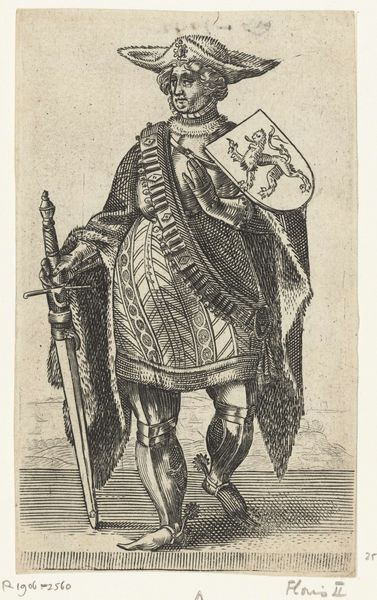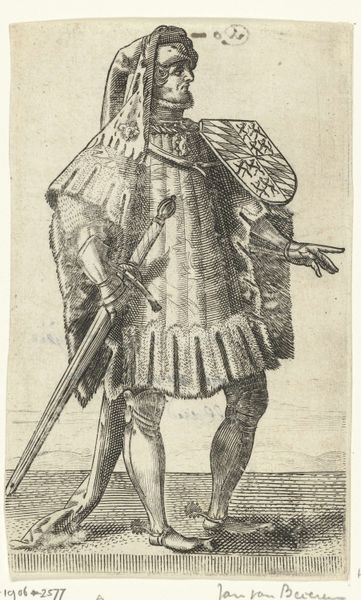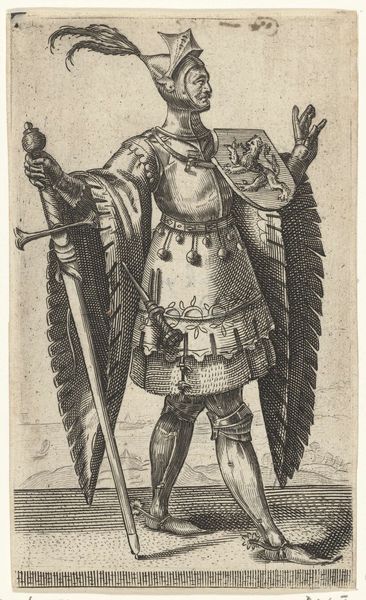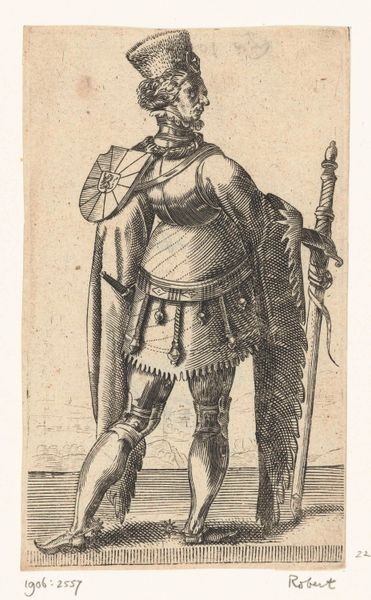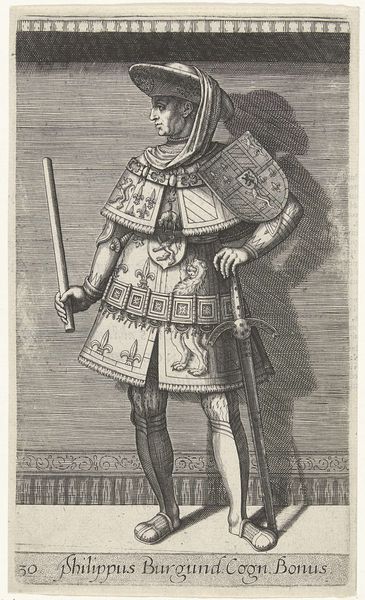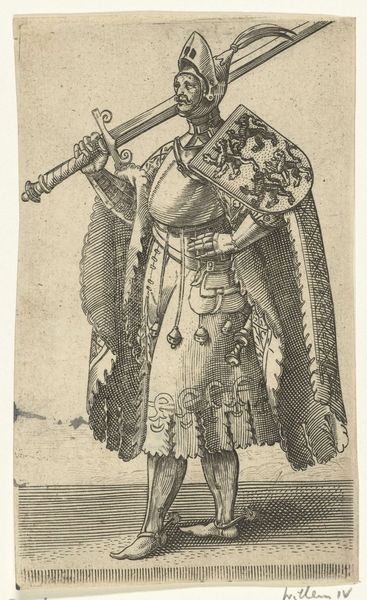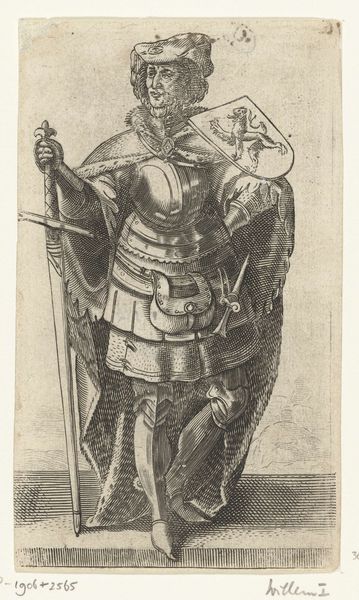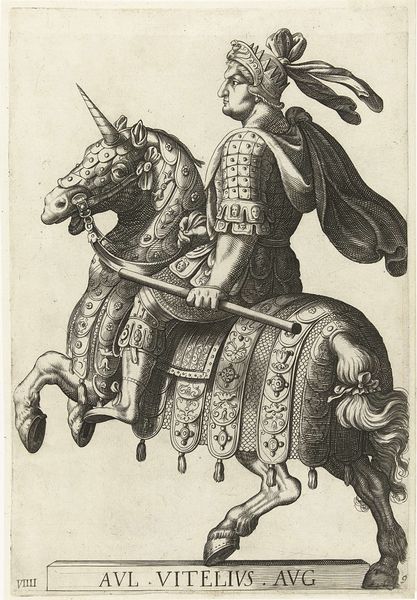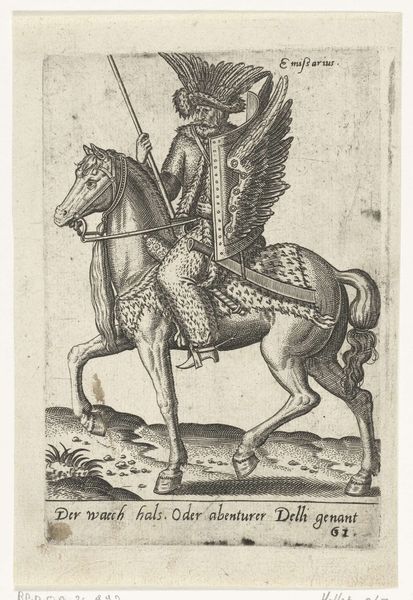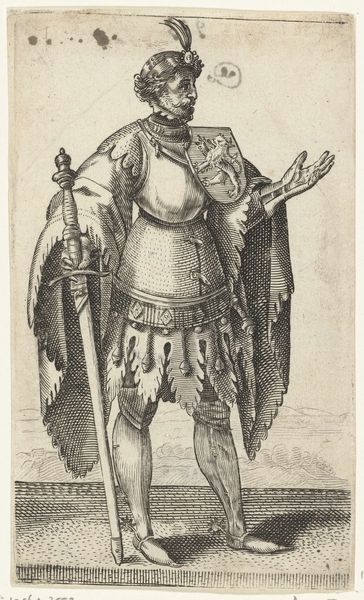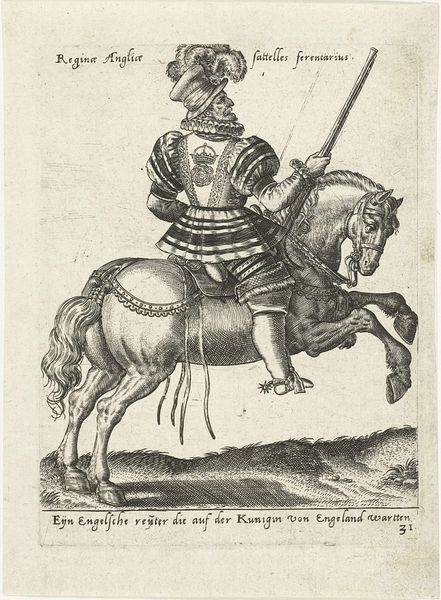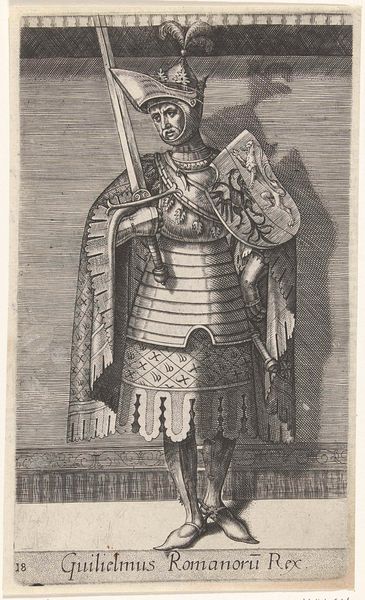
Portret van Godfried III met de Bult, hertog van Neder-Lotharingen 1620
0:00
0:00
#
imaginative character sketch
#
light pencil work
#
quirky sketch
#
pencil sketch
#
old engraving style
#
cartoon sketch
#
personal sketchbook
#
pen-ink sketch
#
sketchbook drawing
#
sketchbook art
Dimensions: height 130 mm, width 80 mm
Copyright: Rijks Museum: Open Domain
Editor: So, here we have Adriaen Matham’s “Portret van Godfried III met de Bult, hertog van Neder-Lotharingen” from 1620, residing here at the Rijksmuseum. The detail achieved through what looks like pen and ink is fascinating. What strikes me is the level of detail invested in depicting the subject's armor and attire, especially for a portrait. What do you make of this piece? Curator: It’s a remarkable image precisely because it so vividly reflects the materials of power. Note how the intricate linework emphasizes not only the physical weight of the armor, but also the economic and social investment required to produce and maintain it. This wasn’t just personal protection; it was a walking billboard of status, manufactured by skilled laborers. Editor: So you’re saying the artwork emphasizes the process and materials involved in crafting the armor and, by extension, projecting the Duke’s authority? Curator: Precisely. Consider the relationship between artist, patron, and artisan. Matham's skill is evident, but the image’s ultimate purpose is rooted in valorizing the patron's status through displaying elaborate craftsmanship. How does the starkness of the medium—probably etching or engraving—contribute to your understanding? Editor: I hadn’t thought about it that way. The lack of color, the stark lines, somehow reinforce the cold, hard reality of power. It makes it feel less romantic and more… material. Curator: Exactly. The material and means of production remove any soft edges. Each line is deliberate. In a way, Matham becomes another kind of artisan, reproducing power through his own craft. It invites us to consider the labor involved in not only making armor but also in creating an image of authority. Editor: It’s a perspective shift. I was focusing on the individual, but now I see the web of making – labor, material, status – all intertwined. Curator: It’s about uncovering those often unseen relationships that bind art to the social fabric of its time. Looking closer at process, and production, uncovers new details and offers alternative points of entry. Editor: Thanks, that was eye-opening, moving away from aesthetic to also consider materiality gives so much depth.
Comments
No comments
Be the first to comment and join the conversation on the ultimate creative platform.
